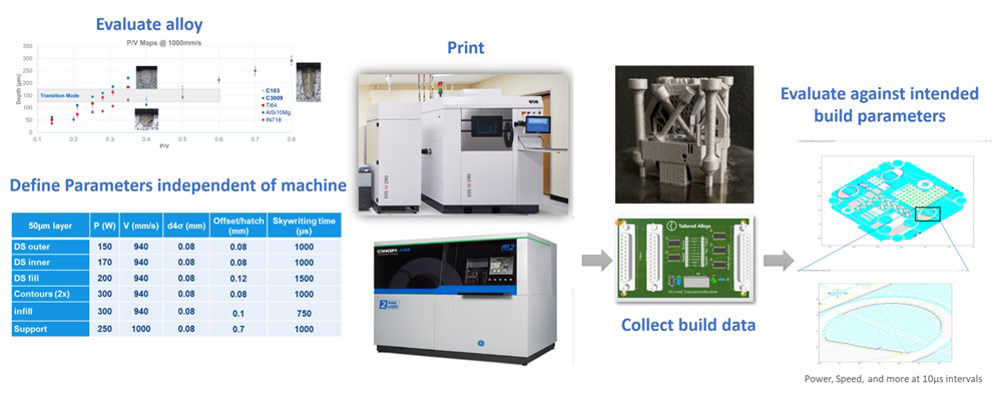


Workflow to develop machine agonistic build parameters for refractory alloys and validate parameters at a 10μs time scale.
Problem
Future high-speed vehicles challenge the limits of design, material performance, cost, supply chain, and lead times. Additive manufacturing (AM) is advertised as a solution, but it suffers from a lack of reproducibility, qualification costs, material availability, and data silos. The specific nature of process development in laser powder bed fusion (LPBF) and the lack of a universal build file language are seen as major hurdles limiting the impact of LPBF for high-speed vehicle applications. Prior work has led to the development of C103 processing parameters and an accompanying database that includes the evaluation of other refractory alloys like titanium-zirconium-molybdenum (TZM) and C-3009.
Objective
The objectives of this project are to:
- Perform a development effort to deliver full print parameters for molybdenum (Mo) alloy.
- Develop a roadmap for the insertion of high-temperature alloys printed using LPBF into the Department of Defense (DoD) industrial base.
- Create a LPBF refractory alloy build qualification tool that enables microsecond assurance that the instructions defined in the developed build parameters under Phase I are executed to overcome the machine make/model/serial number materials qualification challenge.
Technical Approach
Tailored Alloys will utilize their alloy evaluation and parameter development method to develop a full parameter set for a refractory alloy. The full parameter set will include spot size, scan speed, hatch spacing, layer thickness, and laser power as a function of geometry factors with relative tolerances on each. The team will perform relevant customer-discovered and techno-economic analysis during the alloy chemistry selection to be incorporated into a data-driven roadmap for inserting novel refractory alloys made via LPBF into the DoD supply chain. Prior efforts have revealed challenges in utilizing and validating print quality even when build parameters are supplied. To resolve this a bolt-on refractory alloy build qualification tool will be created for a commercial LPBF machine by collecting motor encoder signals at 100KHz. The tool will generate a universal build file that captures all data required to effectively reproduce LPBF builds of refractory alloys. A DoD facility or contractor printing with C103, or other agreed upon refractory alloy will be identified to install the system and demonstrate the digital reconstruction on a closed architecture system.
Project Participants
Project Principal

Public Participants
- U.S. Department of Defense
